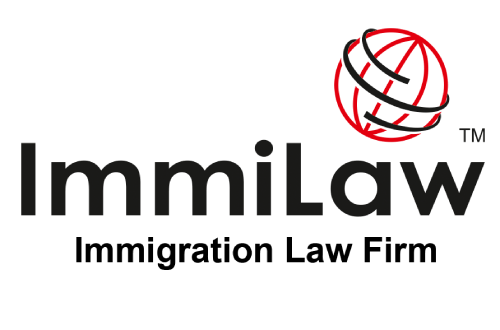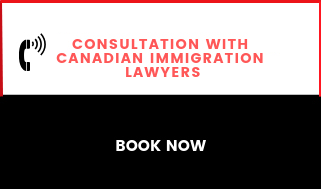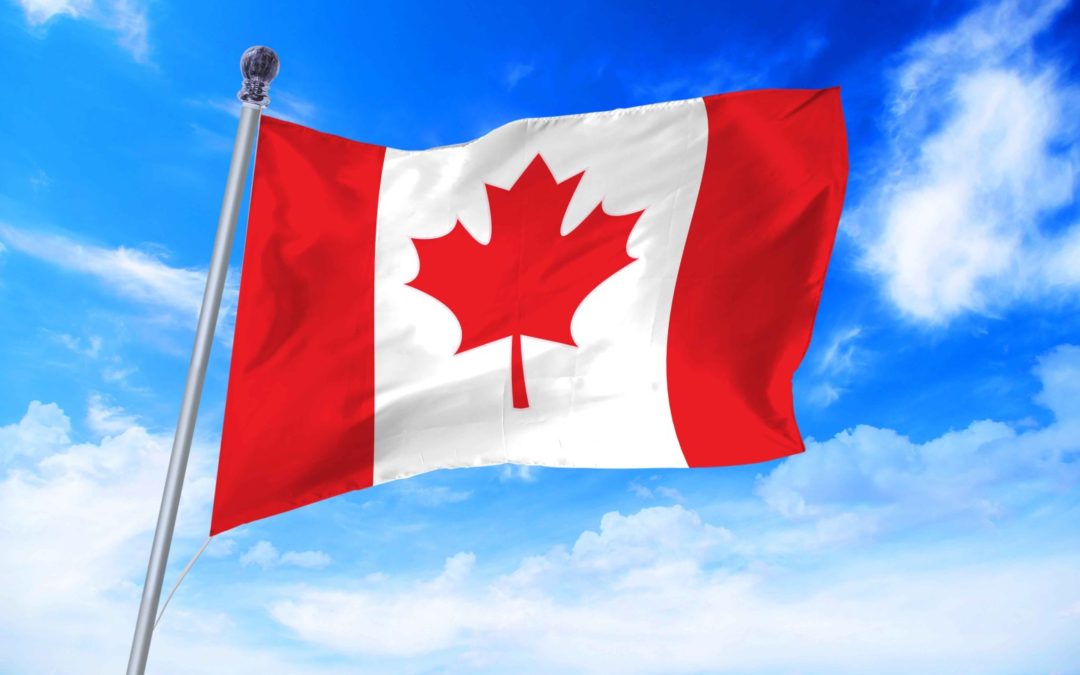
by Immilaw Team | Nov 3, 2023 | Canada Immigration
The Supreme Court of Canada delivered a landmark immigration law on September 27, ruling that curtails the authority of immigration officials and tribunals in deporting foreign nationals with no criminal convictions based on security concerns. The Supreme Court redefined the immigration law during the Mason v Canada (Citizenship and Immigration) case that revolved around foreign nationals Earl Mason and Seifeslam Dleiow residing in Canada.
Free Immigration Assessment
Mr. Mason faced charges of attempted murder and discharging a firearm stemming from a bar altercation. However, due to delays, these charges were ultimately dropped. Mr. Dleiow faced allegations of committing acts of violence against intimate partners. He received dismissals on some of these charges and admitted guilt in three other cases.
Immigrate to Canada
After these incidents, the Canada Border Services Agency (CBSA) compiled reports claiming that both individuals were ineligible for entry into Canada under the provisions of s—34 (1)(e) of the Immigration and Refugee Protection Act (IRPA). Under the stipulations of IRPA’s Section 34(1)(e), it is outlined that a permanent resident or a foreign national can be deemed inadmissible on security grounds for their involvement in acts of violence that could potentially jeopardize the lives or safety of individuals in Canada.
In its ruling, the inadmissibility tribunal concluded that the two men were indeed inadmissible to Canada, interpreting “acts of violence” as per section 34(1)(e) in a broad manner, devoid of the necessity for a direct connection to national security or the security of Canada.
So, despite not posing a threat to national security, the aggressive actions of both individuals constituted grounds for their inadmissibility to Canada. In disagreement with this decision, the two men pursued appeals that ultimately reached the Supreme Court.
The Supreme Court determined that an individual can only face inadmissibility under section 34(1)(e) of the IRPA if their violent conduct is directly connected to national security or the security of Canada. Since neither Mr. Mason nor Mr. Dleiow were alleged to have engaged in acts of violence related to national security or the security of Canada, section 34(1)(e) did not establish grounds for their inadmissibility.
Advocates and legal experts welcome the decision of the Canadian Supreme Court and assert that the ruling will limit the capacity of authorities and government tribunals to employ overly broad measures for expelling individuals from the country, thereby enhancing accountability in deportation decisions.
Feel free to contact us for your queries.
Read To Know: All You Need To Know About LMIA For Canada

by Immilaw Team | Nov 3, 2023 | Canada Immigration
What is LMIA for Canada?
Labour Market Impact Assessment (LMIA) is a document issued by Employment and Social Development Canada (ESDC) allowing Canadian employers to hire a foreign worker for a Canadian job. A positive LMIA will reflect the requirement of a foreign employee to fill the job vacancy. It confirms the unavailability of a Canadian worker or permanent resident to do the job. It also ensures that hiring a foreign worker will not negatively impact Canadian job opportunities.
Free Immigration Assessment
Who needs LMIA?
Canadian employers hire foreign workers due to the unavailability of suitable candidates to fill the vacancy. Following are the workers that require LMIA to work in Canada:
- High-wage workers
- Low-wage workers
- Seasonal Agricultural Workers: temporary agricultural workers
Please visit the official website of IRCC. Additionally, consider consulting an immigration professional to determine if a specific job offer requires an LMIA for further clarification.
LMIA Work Permits
Process of obtaining LMIA
Obtaining a Canadian Labour Market Impact Assessment (LMIA) is essential for Canadian employers who want to hire foreign workers for positions that Canadian citizens or permanent residents cannot fill.
To obtain an LMIA, employers need to advertise the job vacancy for a minimum of four weeks and interview candidates who are citizens or permanent residents of Canada.
If the employers prove that those interviewees do not meet the job description, then they may get permission to hire a foreign worker. With the LMIA, the worker can apply for a Canadian work permit.
LMIA applications contain lots of documentation and statistical tabulation. For instance, it includes the exact number of Canadian applicants for the vacancy, the number of offers of employment made, and the number of ineligible applicants. Employers must produce a written document describing why those applicants weren’t selected.
However, LMIA is optional for all kinds of work permits. The International Mobility Program covers LMIA-exempt work permit streams. Also, Quebec has different processes and policies for LMIAs.
The Temporary Foreign Worker Program
The Temporary Foreign Worker Program is a Canadian immigration program that allows Canadian employers to recruit foreign workers to fill temporary labour shortages. The program is part of Canada’s broader immigration system designed to address specific labour market needs.
The TFWP is divided into two main streams: High-wage worker and Low-wage worker streams.
If you need to apply for an LMIA, the wage for the job position will be the deciding factor:
- The employer must apply under a high-wage worker stream if the foreign worker has a median hourly wage at or above the province or territory.
- The employer must apply under a low-wage worker stream if the foreign worker has a median hourly wage below the province or territory.
Therefore, when assessing which stream to follow:
1) Identify the skill level and job title within the NOC Matrix.
2) Assess if Higher-Skilled or Lower-Skilled.
3) Go to www.jobbank.gc.ca and click “By wages” in the menu.
4) Type the name or NOC code of the job title.
5) Locate the province/territory of the job.
6) Identify the “Median Wage” for that specific location. This will be the “prevailing wage rate” for this particular area in this occupation.
7) Assess this prevailing wage rate against the provincial/territorial median wage and categorize it as high-paid- low-paid jobs.
Once you receive an LMIA, you should distribute a copy of the confirmation letter to each temporary foreign worker and instruct them to apply for a work permit.
Employers and foreign workers considering the TFWP should be aware of the specific requirements and processes associated with the program, as they can change over time. Consulting with immigration experts or legal advisors can help you navigate the application and compliance processes effectively.
LMIA Requirements
1. The Stream of Higher-Skilled Occupations — High-Wage Workers
Advertising:
1) National/Provincial Job Bank for at least 28 days (must remain posted until LMIA is issued)
2) Two other sources of advertising, one of which must be national in scope.
Transition Plan
Employers must complete a detailed transition plan (to be explained in the next section).
2. The Stream for Higher-Skilled Occupations — Low-Wage Workers
Advertising:
1) National/Provincial Job Bank for at least 28 days (must remain posted until LMIA is issued).
2) Two other sources of advertising, one of which must be national in scope.
Cap on Low-Wage Temporary Foreign Workers
Employers with ten or more employees applying for a new LMIA under this stream are subject to a cap. If an employer hires for a sector with a demonstrated labour shortage, they may employ up to 30 percent of their employees through this stream. Otherwise, employers may hire up to 20 percent of their employees through this stream.
3. The Stream of Lower-Skilled Occupations – High-Wage Workers
Advertising:
1) National/Provincial Job Bank for at least 28 days (must remain posted until LMIA is issued).
2) Two other sources of advertising, one of which must target under-represented groups.
Transition Plan
Employers must complete a detailed transition plan (to be explained in the next section).
4. The Stream of Lower-Skilled Occupations – Low-Wage Workers
Advertising:
1) National/Provincial Job Bank for at least 28 days (must remain posted until LMIA is issued).
2) Two other sources of advertising, one of which must target under-represented groups.
Cap on Low-Wage Temporary Foreign Workers
Employers with ten or more employees applying for a new LMIA under this stream are subject to a cap. If an employer hires for a sector with a demonstrated labour shortage, they may employ up to 30 percent of their employees through this stream. Otherwise, employers may hire up to 20 percent of their employees through this stream.
LMIA in Quebec
Employers in the province of Quebec may fill selected positions without including proof of recruitment efforts. The occupation list – 2023 was implemented on February 24.
Quebec added various entry-level positions to the in-demand list for facilitated LMIAs in 2022. The newly listed occupations will help Quebec to fill significant gaps in its job market. These lists will remain eligible for simplified processing until the final updation on February 24, 2024.
Employer Transition Plans
Employer Transition Plans are a requirement under the Temporary Foreign Worker Program (TFWP) in Canada for certain employers. These plans ensure that employers actively work toward reducing their reliance on temporary foreign workers (TFWs) over time and that they try to recruit and train Canadian citizens or permanent residents to fill those positions.
In addition to the recruitment and advertising requirements, Canada needs employers to undertake the following activities:
1) Three additional recruitment activities.
2) One additional activity targeting groups such as new immigrants, youth, aboriginals, and differently-abled Canadians.
3) Helping temporary foreign workers obtain permanent residence by providing valid job offers.
Employers must prepare the expected number of Canadians to recruit through these activities. They must supply proposed timelines for the outlined activities. Finally, the result of the transition plan must be reported to ESDC. Evaluation of the estimated plans will take place thereafter. However, employers get an exemption from submitting a transition plan if they provide proof that the vacant position requires a specific skill/ or is only project-based.
Cap on low-wage Temporary Foreign Workers
Canada has imposed a cap on the number of low-wage Temporary Foreign Workers (TFWs) that an employer could hire in specific industries and regions. These caps were introduced to ensure that the employment of TFWs in low-wage positions did not displace Canadian workers.
Under this stream, if the Employers apply for ten or more employees for a new LMIA, then they are subject to a cap. Employers can hire up to 30% of their workers through this stream if they prove that there is a labour shortage. If not, they may employ only up to 20% of their workers through this stream.
Refusal to process a LMIA application
ESDC will no longer process LMIA applications and may be refused due to the following reasons:
- If your advertising and recruitment efforts do not meet ESDC’s standards
- If ESDC finds that the wages and working conditions are inadequate
- if the assessment indicates a negative impact on the Canadian labour market
- An inadequate transition plan
- if your business has a history of non-compliance with federal or provincial/territorial laws related to employment,
Please also note that the Immigration regulations and policies can change, so previously accepted applications may not meet updated requirements.
Duration of work permit
The duration of a work permit in Canada may vary depending on various factors, including the type of work permit, the specific circumstances of the foreign worker, and the employer’s needs.
2-year employment duration for low-wage positions
As part of a 3-year pilot initiated in March 2020, TFWP has extended support and special measures to employers and workers affected by COVID-19. In the low-wage stream, there will be an increase from 1 to 2 years for LMIA in the allowable employment duration.
3-year employment duration for high-wage positions
From April 4, 2022, employers submitting an LMIA application for a high-wage position can request up to 3 years of employment. The high-wage stream includes caregiver positions, Agricultural Stream, and Express Entry.
The LMIA processing time is not published online by any departments in Canada. The Canadian government does not have stated about processing standards or targets publicly.
Processing time for LMIAs
For highest-demand occupations (skilled trades), highest-paid occupations or short-duration work periods (120 days or less), LMIAs are issued within ten working days.
Highest-demand occupations list
The 10-day service standard is restricted to the skilled trades where the existing wage rate is equal to or above the current provincial/territorial median wage.
Shortest-duration occupations
The 10-day service standard will be made available for employers for a duration of 120 days and where the prevailing wage rate for the occupation is equal to or above the median wage of the province/territory.
Application fee for LMIA
Employers, not workers, must pay the application fee for any job position request. However, this is per position, not per application. With the increase in requests for a job position, the costs increase accordingly. Thus, Employers must pay a fee of CAD 1,000 to submit an LMIA application under the Temporary Foreign Worker Program.
Auditing for the Temporary Foreign Worker Program
Employers are subjected to various auditing and compliance monitoring to ensure they adhere to program requirements and proposed activities in the transition plans. These audits and compliance measures are implemented to safeguard the rights of foreign workers, protect the Canadian labour market, and maintain the program’s integrity.
Proper Business Communication
Employers seeking to hire should be able to articulate their business challenges clearly. To obtain an LMIA, employers must follow detailed guidelines. Most Program Officers base their decisions on internal labour market indicators and the information submitted by the employer. So, if they are convinced, they issue a positive LMIA. Program Officers keep a vigilant eye on employers and do not entertain fraud in their recruitment efforts. Therefore, perfect LMIA applications must be detailed, logical, and well-articulated business communication.
Other details of the LMIA
Many job seekers may get frustrated by employers’ need for knowledge of IRCC or about Canada’s LMIA process. It is advisable that foreign workers should be aware of their rights and avenues for reporting any mistreatment or violations of program conditions.
If your LMIA application is refused, you must review the refusal letter provided by ESDC. Depending on the circumstances, you may appeal the decision or reapply with corrected information. Seeking legal advice or consulting with an immigration expert is often recommended to navigate the process effectively, especially if you believe the refusal was unjust or based on misunderstandings.
Interestingly, you may bypass the LMIA process by obtaining a work permit under any of the International Mobility Program streams. This option would be an excellent option for workers and employers.
A Canadian lawyer can be a valuable resource for immigration applications, including for Labour Market Impact Assessments (LMIAs) or other types of immigration processes. A Canadian immigration lawyer can provide legal advice and guidance throughout the application process. We, ImmiLaw Immigration, a Canadian immigration and law firm, have extensive expertise in securing LMIAs for suitable employers and work permits for foreign workers.
Feel free to contact us for your queries.
Read To Know: Work in Canada Without LMIA
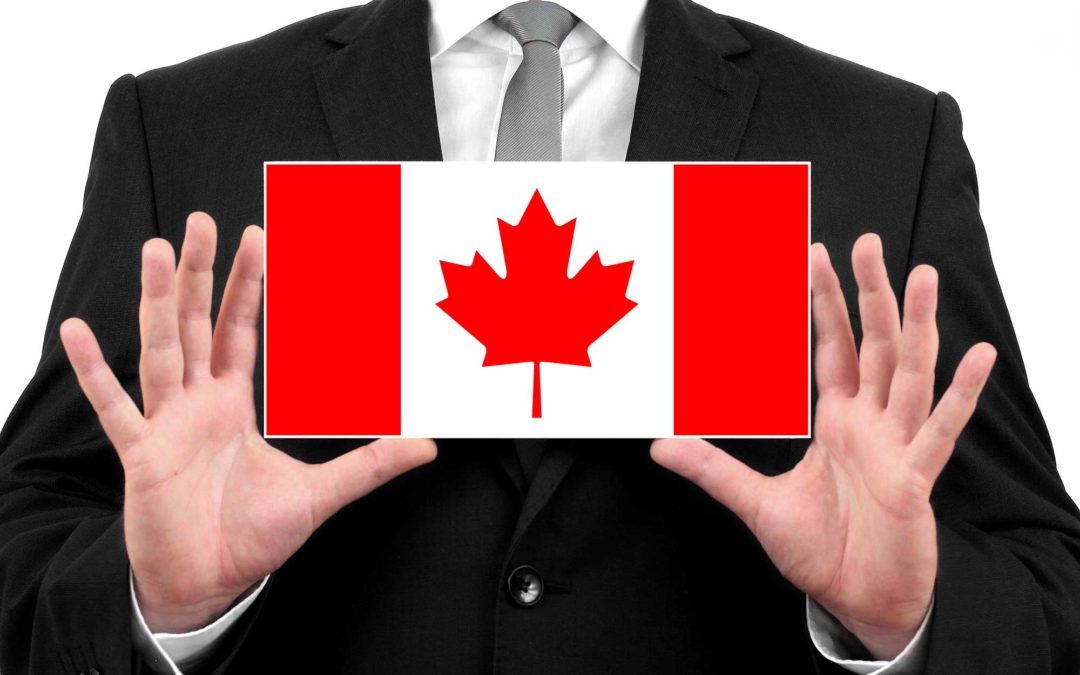
by Immilaw Team | Nov 1, 2023 | Canada Immigration
Moving your established company overseas brings both challenges and chances for growth. Canada is a hotspot for immigrants and business people, attracting those looking for new opportunities. Its appeal as a relocation spot lies in various factors that make it attractive for people aiming to expand or start fresh in a thriving business setting.
Free Immigration Assessment
Growing your business in Canada
Here’s an extensive roadmap for expanding your business operations into Canada.
To establish your company’s operations in Canada and secure Canadian work permits for you or your team, consider applying for the Intra-Company Transfer (ICT) program. ICT program allows foreign companies to transfer executives, managers, or specialized employees.
Note that securing a work permit could take around 2-4 months, depending on your nationality and various other factors.
Business immigration to Canada
To qualify, both the expanding company and the applicant need to meet specific requirements as mentioned below:
1. Verify your company’s eligibility
Not every business owner can relocate their companies to Canada. Several requirements must be met by both the expanding companies and selected applicants to take advantage of the ICT program’s provisions.
Criteria for Foreign Companies:
- Active Business Engagement: Your home company must be fully operational and involved in conducting business, such as selling goods or services, employing staff, acquiring customers, and generating revenue.
- Operational History: Your company should be at least one year old. The longer the history, the stronger the support for your application.
- Adequate Gross Revenue: Although there’s no fixed minimum revenue requirement, your business should demonstrate gross sales of CAD 300,000 or more. If your revenue is lower, seek legal advice to strategize your company’s expansion efforts effectively.
- Accessible Funds for Expansion: While there are no minimum criteria for operating a business in Canada, your company must exhibit enough funds to support Canadian operations. A sum of at least CAD 100,000 is recommended to sustain operations during the initial year.
- Justification for Expansion: Your company should have valid reasons for expanding to Canada, such as better customer service in North America or engaging in export activities. Discuss other potential reasons with an immigration lawyer to ensure a strong rationale for expansion.
Applicant Criteria:
- Position in Home Country: You must be an executive, senior manager, or specialized knowledge worker in your current company.
- Employment Duration: Demonstrate your current employment in your home company and have at least one year of work experience within the past three years in the above-mentioned position.
- Position in Canada: Show evidence of being transferred to a comparable role in Canada.
After meeting the eligibility criteria for the ICT program, the next step is establishing your company’s presence in Canada.
2. Setting Up Your Business in Canada
While establishing your presence in Canada, focus on the corporate ownership structure of your Canadian company. Canadian law mandates that your home country business and your Canadian company must have a parent/subsidiary or affiliate relationship.
Your Canadian company must register as a parent, subsidiary, or affiliate of your existing business.
A subsidiary relationship occurs when your foreign company owns and controls your Canadian company, while a parent relationship is established when your Canadian company owns and controls your home company.
An affiliate relationship exists when the same individuals or group control your home company and your company in Canada.
After confirming the ownership structure of your Canadian company, the next step is to select the location for your corporate office in Canada. To register a Federal company in Canada, you’ll need at least one Canadian Director in your business.
However, not all provinces demand the presence of a Canadian Director. For instance, in Ontario or British Columbia, a Canadian Director is optional. Alberta mandates at least 1 Canadian director to supervise Canadian operations.
If finding a Canadian Director is challenging, seek guidance from a Canadian law firm or an accounting firm for assistance.
3. Applying for ICT Work Permit
After registering your company in Canada, you can apply for a work permit to operate within your newly established Canadian company. To complete the work permit application under the ICT program, you must submit various documents to Canadian immigration officers to prove your eligibility.
The necessary documents required are as follows:
For Foreign Company:
- Company registration document indicating the establishment date (a minimum of 1 year old company)
- Ownership documents and proof of business engagement (such as website, marketing materials, tax filings, licenses/permits, commercial lease agreement, employee remittance payments, etc.)
Applicant’s Employment History with the company:
- Employment contract and records, payslips
- Personal tax filings showing employment details
- Evidence of remuneration or dividend payments (for business owners)
- Company’s organizational chart, business cards, and reference letters.
Financial Documents:
- Company’s tax reports displaying gross revenues and sales figures
- Corporate bank statements showing sufficient liquid funds for expansion
Canadian Company Documents:
- Registration papers (Articles of Incorporation)
- Licenses & permits (if applicable)
- Shareholder agreement or share certificate confirming ownership
- Lease agreement (if applicable)
- Financial documents and marketing materials (website, promotional materials, if available)
Additional Requirements for First ICT Transfer:
- Business Plan outlining rationale for expansion, proposed business activities, investment amount, cash flow projections, and hiring plans.
Transfer Letter:
- Letter from the home company detailing the applicant’s current role, the position they’ll hold in Canada, and reasons for their presence in Canada.
Personal Documents of the Applicant:
- Resume, educational credentials, certificates & licenses, reference letters
- Evidence of advanced education or expertise
- Demonstrative ties to the home country (assets, resident family members, etc.)
- Travel history, police clearances, medical examination results
Additionally, ICT work permits typically have a duration of two years. Newly established Canadian companies can initially receive a one-year permit, extendable multiple times. You may bring your spouse/partner and children under 22 to Canada.
4. Arrival in Canada
Typically, Canadian authorities process work permit applications within 1 to 4 months.
Upon approval of your work permit application, you’ll receive a work visa to enter Canada (subject to your citizenship). You will receive your work permit document upon arriving at a Canadian port of entry.
To extend your ICT work permit, you must prove to Canadian immigration authorities that you have effectively established your operations in Canada and have been actively doing business.
The assessing officer will specifically evaluate the following factors before approving your ICT work permit extension:
Business in Canada:
When applying for an extension, you must demonstrate that your business in Canada is genuine and actively selling goods or services to Canadian or global customers. Profitability isn’t a requirement, but your business must be viable and generate sufficient revenue to cover expenses and employee payments.
Commercial premise in Canada:
Your company should maintain a physical presence in Canada rather than solely operating virtually. Even in the modern remote work landscape post-pandemic, having commercial premises in Canada, whether shared or co-working spaces, is necessary for you and your employees’ work location.
Employees in Canada:
The assessing officer will check if your company has employees working within Canada. Even if your employees work remotely, showcasing at least one local employee by the time of the extension application is essential. Emphasizing the importance of your presence in Canada is crucial, underscoring the active nature of your business and your pivotal role in leading the team.
Foreign Company:
Your foreign company must continue actively operating in your home country with the same ownership structure initially presented in your work permit application.
These factors are the most crucial to establish and demonstrate to the Canadian immigration authorities for extending the ICT work permit.
5. Initiate Permanent Residency Application
After working in Canada for 12 months under the ICT work permit, you might qualify to apply for PR through the Express Entry program. You must meet the eligibility criteria, and achieving adequate CRS scores is necessary.
Express Entry applicants with a job offer from their Canadian company can obtain an additional 200 CRS points (executives and senior managers) or 50 points (specialized knowledge workers) without needing an LMIA approval first.
To apply for permanent residence, apart from other requisites, you must meet the following eligibility criteria:
- Language skills equivalent to at least CLB 7 (with a minimum IELTS General Test score of 6 for each band)
- At least one year of post-secondary education
- Police clearance for every country where you resided over six months in the past ten years.
- Medically fit and has no severe health conditions
We trust that our insights have provided you with an understanding of the process involved in expanding your company from anywhere in the world to Canada through the ICT program. Conducting business in Canada, like anywhere else, has its own set of challenges. However, the benefits of expanding your business to Canada far outweigh these challenges. No worries; ImmiLaw Global is committed to supporting you in overcoming these challenges!
For further guidance on relocating your company to Canada, contact the business immigration lawyers of ImmiLaw Global. The experts at ImmiLaw Global Firm assist in relocating your existing company to Canada but also help in selecting the appropriate business entity for your move to Canada.
Feel free to contact us for your queries.

by Immilaw Team | Jun 16, 2023 | Uncategorized
Canada Post-Graduation Work Permit
After graduating from a Canadian college or university, international students can apply for a Canadian Post-Graduation Work Permit (PGWP). The typical duration of this work permit is three years, up to the same amount of time as the student’s academic program. By enabling them to work for any Canadian business in any industry, PGWP Canada hopes to keep students on board.
Free Online Immigration Assessment
When the study program is over, the student has 180 days to apply for a Post-Graduation Work Permit (after documented confirmation of a degree or diploma certificate is obtained). International graduates can work in Canada with a Post Graduate Work visa (PGWP), which is a temporary work permit. The PGWP typically lasts between 8 and 36 months.
Eligibility Requirement for PGWP from within Canada
If a person satisfies the criteria listed below, they may apply for a PGWP Canada:
- The candidate has been enrolled full-time in school during their entire time in Canada.
- The applicant should apply within less than 180 days after finishing their educational program.
- The candidate has completed a program of at least eight months and obtained a degree or diploma certificate from a Designated Learning Institution (DLI).
- For a PGWP holder to be qualified to apply for a Canadian permanent residence program, they should possess one year of professional work experience in a NOC code of 0, A, or B.
Eligibility Requirement for PGWP from outside Canada
- A study permit for the applicant has been granted.
- The applicant obtained a degree or diploma certificate from a Designated Learning Institution (DLI) after finishing a program that was at least eight months long
- The applicant remained a full-time student throughout the course of their education.
Other Requirements
Other requirements for becoming qualified include the following:
- The candidate should complete a course of study program with a minimum of eight months at a Designated Learning Institution (DLI)that qualifies.
- Any course of study must result in a degree or diploma certificate.
- The candidate has obtained a transcript and an official letter from the qualified DLI attesting that the applicant satisfies the conditions necessary for program completion
PGWP application can be made only once in the lifetime, but it is possible to extend your PGWP
Your PGWP cannot be renewed; however, if it was time-limited due to your passport’s expiration, you might be able to extend your PGWP. Your PGWP’s validity period cannot exceed the expiration date of your passport. If so, to receive the entire validity of your PGWP, you must apply for a work permit extension when your passport is renewed. If you meet the requirements for a different kind of work permit, you can seek to extend your PGWP before it expires.
If your PGWP is about to expire, you may want to choose an open work permit or an employer-specific work permit. If you are qualified for this work permit and submit your application before your PGWP expires, you can have the status that allows you to continue working in Canada. If your PGWP is about to expire, you may want to choose an open work permit or an employer-specific work permit. While awaiting the processing of your extension, maintained status gives you legal standing. Before their authorized stay expires, temporary residents may apply to extend it. The legislation extends your permitted stay as a temporary resident until a decision is taken on behalf of your application. As a temporary resident during the processing term, you are additionally regarded as having legal status.
Who can apply for PGWP
Graduates who apply for a PGWP before the expiration of their study permit are qualified to work full-time without a work permit while awaiting a decision on their application if all of the following criteria are met:
- When you applied for the post-graduation employment visa, you had or had a valid study permit.
- Your educational program is now over.
- You fulfilled the prerequisites for working off-campus without a work permit by being a full-time student enrolled at a DLI in a postsecondary academic, vocational, or professional training program of at least eight months in length that resulted in a degree or diploma certificate.
- You did not exceed the permissible working hours.
A candidate cannot apply for a Post-Graduation Work Permit (PGWP) if:
- Their study permit has been inactive for more than 180 days.
- In the past, they had already received a PGWP.
- The candidate has experience learning English or French as a second language.
- The candidate participated in general interest or self-improvement courses of study.
- The candidate completed their studies in Canada at a non-Canadian university.
PGWP Processing Time
A PGWP can be processed in 80 to 180 days.
While awaiting your PGWP, you may apply before your student visa expires and work in Canada. You have 180 days to apply after completing all your academic prerequisites in Canada. While awaiting your PGWP, you may apply before your student visa expires and work in Canada.
If you leave Canada after completing your studies, you may apply for a PGWP from overseas. Previously Canadian citizens could only apply for post-graduation work permits from within the country.
When applying for a Canada PGWP, you must include the supporting documentation listed on the below-mentioned checklist:
PGWP Documents Checklist
- Extend my stay or continue to work in Canada by submitting Form IMM 5710
- IMM 5476, “Use of a Representative,”
- Form IMM 5475, “The permission to release personal information to a designated person”
- Passport page photocopies,
- Identity documents in photo form,
- Current immigration document photocopy, if applicable,
- The program’s final transcript,
- A letter from the college or university, as well as the official diploma,
- Evidence of payment,
- The original letter that was given to you by the university stating your anticipated employment is a crucial component of your academic program (for Co-op Workers).
PGWP Application Process
Complete the Post-Graduate Work Permit Application process.
1. Fill out the PGWP form online:
Graduates must first complete their online Post-Graduate Work Permit application.
2. Pay the application fee:
The applicants must pay a CAD 255 fee for online PGWP applications. You might need to pay an additional CAD 350 to reinstate your status as a student if the validity of your study permit expires before you apply.
3. Compile the Essential Documents:
The next step for graduates is to assemble the paperwork needed for their application. This contains evidence that they have finished their coursework. One of the following papers may be used to offer this proof:
- A diploma or degree,
- Official correspondence from the school’s official transcripts or copies of transcripts downloaded from the school’s website is required.
4. Submit the Application:
The next step is for graduates to submit their applications online. After this, Immigration, Refugees and Citizenship Canada (IRCC) may need the applicant to submit more paperwork.
Successful applicants will receive their Post-Graduate Work Permit inside Canada. Successful candidates outside of Canada will receive their PGWP and a fresh visiting visa allowing them to enter the nation.
PGWP pointers to remember:
1. The PGWP offers international students the opportunity to get valuable professional job experience in Canada, which is one of its main advantages.
2. It’s vital to remember that a study permit expires 90 days after the conclusion of a course of study. You must also apply for a PGWP within 180 days of receiving confirmation that you’ve fulfilled the prerequisites for finishing your program of study. Depending on which occurs first—the day you receive your final grades or the day you receive official written notice that the program is over—the days will start counting.
3. You are not permitted to work without a permit if your study permit expires or becomes invalid before you apply for a PGWP, and you must instead:
- Apply for a PGWP from abroad after leaving Canada.
- Apply to reinstate your status as a student by submitting an accurate PGWP application ($255) and the necessary reinstatement fees ($350).
4. It’s interesting to note that while physically residing in Canada, you can also apply from “outside” of Canada. Maintaining your visitor status until you acquire the official work visa is necessary if you wish to stay in Canada.
5. You will receive an automatically generated letter from IRCC after submitting your PGWP application. The letter will grant a 120-day validity period for continuing to work. Most applicants should learn the outcome of their application before the 120-day deadline. You can use the IRCC web form to ask for verification of authorization to work if 120 days have passed and no decision has been made.
6. Spouses and common-law partners of The PGWP holders may be qualified for a work permit.
- Spouses and common-law partners of the PGWP holders should be able to work in Canada for at least six months after receiving their open work visa application.
- Should occupy a high-skilled job position (NOC 0, A, B)
- Be physically residing in Canada or have plans to do so while working
7. A PGWP holder must attain one year of work experience in a NOC code of 0, A, or B before applying for permanent residence status in Canada under the Canadian experience category.
8. The PGWP allows you to apply for jobs whenever you want, anywhere in Canada (as long as your permit is still valid).
9. International students can only work 20 hours a week during academic sessions. But while your application is being reviewed, you can begin working full-time as soon as you finish your education. Within 90 days of getting your Letter of Completion, and while your study permit is still in effect, you must submit your PGWP application.
Canada’s earnest efforts to entice international students to remain in the country include the post-graduate work permit (PGWP) program. The numerous liberties and advantages of the program acknowledge the skills of international graduates, thereby helping them work for their betterment.
Feel free to contact us for your queries.
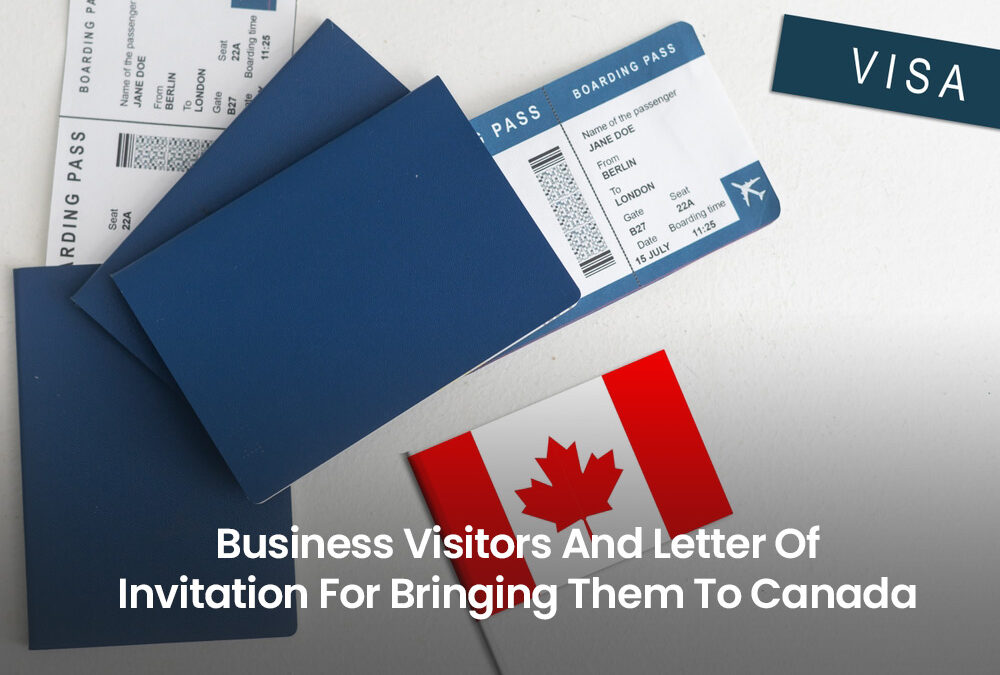
by Immilaw Team | May 11, 2023 | Canada Immigration
A business visitor is an individual who comes to Canada for a short-term business trip. The purposes of this short-term business visit can include attending meetings, business conferences, or negotiating contracts. As per immigration rules and regulations, business visitors are not permitted to enter the Canadian labour market and should not engage in any work activities while in Canada. Read on to get more clarity about letter of invitation for business visitors to Canada.
Free Immigration Assessment
How can you be a business visitor to Canada?
Is your intention only to be involved in business activities without any plans to enter the Canadian labour market? Then consider yourself as a genuine business visitor to Canada. You can also consider yourself a business visitor to Canada if you travel as an after-sales service provider to perform tests and repair works for commercial and industrial equipment.
Canadian Business Visitors Visa
Various ways to prove that you are a business visitor
- Convince the immigration authorities that you intend to reside in Canada for less than six months.
- Convince the immigration authorities that you don’t have any plans to explore the Canadian labour market.
- Convince the immigration authorities that your business and the real source of profits are outside of Canada.
- Convince the immigration authorities by providing all the essential documents for getting your application to become a Canadian business visitor approved.
Immigrate to Canada
Various activities you can perform being a Canadian business visitor
- Attend business conferences, trade fairs, conventions and meetings.
- Take orders to purchase goods and services in Canada.
- Expand government functions or foreign business by buying services and goods in Canada.
- Get industrial training from a company located in Canada which is the Central HQ of the company you are working at in your home country.
- Provide training for the branch employees of the company in Canada, which is the subsidiary wing of your main company.
What is needed to enter Canada as a business visitor?
- You will require an authentic passport with a valid visitor visa or an Electronic Travel Authorization (eTA).
- The full contact details of your business host in Canada.
- Valid documents for proving that you have adequate money for your stay in Canada and for returning to your home country.
- An invitation letter from your business or company host in Canada.
The below-mentioned information will help you understand all about invitation letters for Canada business visitors. If you invite a business visitor to Canada, you need to provide them with a letter of invitation. This letter should be written on the company letterhead and should include the following information:
- The purpose of the trip: Explain why the individual is coming to Canada and what they will be doing here. This should be specific and detailed.
- The duration of the trip: Indicate the exact dates of the visit, including the arrival and departure dates.
- Ensuring the trip duration does not exceed the permitted stay for business visitors in Canada is vital.
- Information about the host company: Provide details of your company, including name, address and contact information.
- Information about the business visitor: Include the invited individual’s name, job title, and relationship to your company.
- Information about accommodations: If you provide accommodations for the business visitor, including the address and the precise dates of their stay. If not, provide information about local accommodations that they may use.
- Details about financial support: Explain how the business visitor will be financially supported in Canada. This can include information about who will pay for their accommodations, transportation, and other expenses.
- Other relevant information: You can also provide additional information that may be helpful for the business visitor, such as information about transportation, local customs, or other relevant details.
Once the Canada business visitor invitation letter has been written, it must be printed on the company letterhead, signed by an authorized company representative, and sent to the business visitor. The business visitor should include a copy of the invitation letter with their application for a temporary resident visa (TRV) or an eTA if required.
It would help if you remembered that a letter of invitation does not guarantee that a business visitor will be granted a TRV or an eTA. The Canadian government decides to issue a TRV or an eTA by considering numerous factors, such as the purpose of the visit, visitors’ ties to their home country and the duration of their stay in Canada.
In conclusion, if you invite a business visitor to Canada, you may need to provide them with a letter of invitation. The letter should be specific and comprehensive, giving all the vital information regarding the purpose of the visit, the length of the stay and the visitor’s relationship with your company. The business visitor must include a copy of the invitation letter with their application for a TRV or eTA if required.
Hope this article really helped you to understand business visitors and letter of invitation for bringing them to Canada. Also, check out the frequently asked questions below.
FAQs
Q: Who can write your invitation letter?
Only a close friend or a family member can write an invitation letter to Canada for you.
Q: Is a student eligible to send you a Canada invitation letter?
No, only a Canadian citizen or a permanent resident of Canada can send you an invitation letter.
Q: Is it a must to have an invitation letter to Canada?
Yes, if your travel history needs to be stronger.
Q: How long can a person stay in Canada as a business visitor?
As a business visitor, you can stay in the country for a few weeks to up to six months.
Q: Is an invitation letter mandatory to get a Canadian visitor visa?
An invitation letter is not mandatory when applying for a visitor visa to Canada. All you require is to give the complete details of your travel and must be able to meet all the essential immigration requirements.
Q: Can I convert my visitor visa for Canada to a work permit?
Yes, you can apply for a Canadian work permit once you receive a positive Labour Market Impact Assessment (LMIA) from your employer in Canada.
Q: Is it necessary to undergo an interview to get a Canadian business visa?
You need to attend two screening interviews once you arrive in Canada. The interviews will be over soon if all your documents are complete and in proper order.
Q: What is the validity of an invitation letter for a Canadian visa?
If the invitation letter is not used within ninety days of issuance, it will be deemed cancelled. The sponsoring company or host company will then have to obtain a new one to bring in a visitor to Canada.
Immilaw Immigration Law Professional Corporation is one of the well-reputed leading immigration law firms in Canada. Our team of highly qualified and experienced professional lawyers helps our clients with outstanding legal representation in all kinds of immigration matters, making each case successful.
If you have any queries on visas for business visitors and letter of invitation for bringing them to Canada, you can contact us.

